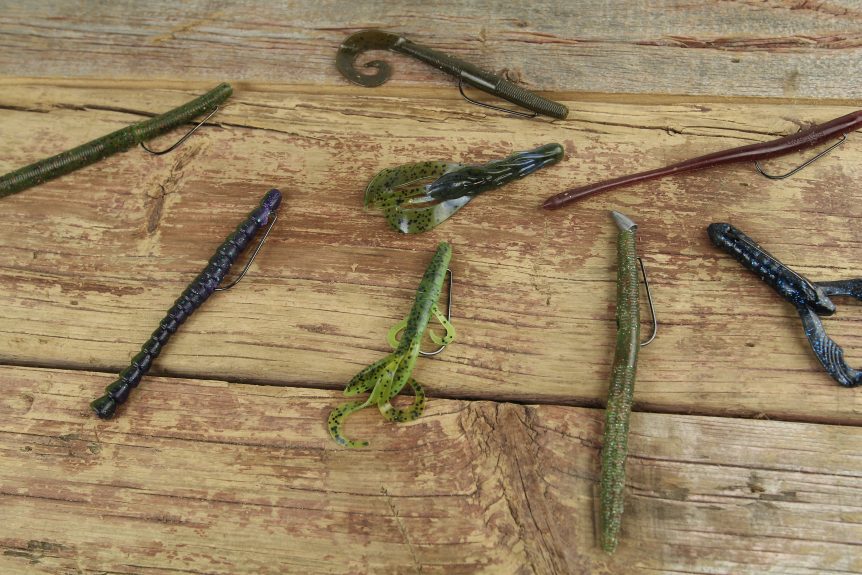How To Texas Rig A Soft Plastic, Weighted vs. Unweighted
Learning how to Texas rig a soft plastic is part of bass fishing 101. And, as the saying goes, there is more than one way to skin a cat. The same goes for bass fishing. On any given day, there are many ways to catch these fish. Some are just better than others. One of the most popular and consistent ways to catch these fish is with a Texas rig. This rig has caught bass for decades and will continue to do so for the foreseeable future.
The secret to the rig’s success is its simplicity. It is nothing more than a hook, line, and sinker (see what I did there) with some slight rigging magic. If you don’t know how to rig the plastic or need clarifying on the rig’s setup, a simple YouTube search will reveal all.
One of the options of the Texas rig is whether to use a weight. Knowing when to add that tiny piece of metal or keep it in the box could be the difference between one bite or one hundred.
How To Texas Rig:Weighted
Perhaps the most classic ways how to Texas rig is with a bullet-style weight above the hook. This setup is used for most conditions and circumstances. Long-casting, punching vegetation, pitching, and flipping are the typical styles of fishing that require a weight, the size of which depends on cover thickness, depth, desired action, wind, and a host of other variables.
The effectiveness of weighted Texas rigs also depends on water temperature and clarity. Typically, when the water is warmer bass are more active and willing to chase a lure. Thus, a heavier weight works well in these conditions. Likewise, in dirty water bass rely more heavily on their lateral line which detects vibrations and movements in the water. This is also an ideal time for a quicker, heavier Texas rig.
Lastly, a small (1/16 or 1/32 oz.) weight is sometimes used when fishing the Texas rig with lures like a swimming worm or frog. This does many things. Firstly, it enables the lure swims with its head in proper position to enable the appendages of the plastic to move. Second, it increases casting distance of these smaller lures. Lastly, this bullet-style addition can even reduce vegetation buildup and help to avoid hang-ups in cover like timber, docks, and lily pads.
How To Texas Rig:Unweighted
Although less common, learning how to Texas rig without a weight should still have its place in your fishing arsenal. By not adding the weight to your rig, it gives the bait a different appearance. The first obvious observation is that the rig does not fall as quickly. Depending upon the plastic you choose for your weightless Texas rig, the bait typically glides or flutters on its way to the bottom. This is particularly useful in clear or cold water where fish may be more finicky. The bass can see the bait from a greater distance and won’t likely be spooked as easily.
Weightless Texas rigs are also great for sight fishing in calm, shallow water or fishing holes in vegetation. The weightless property of the rig allows an angler to keep the bait in the water column longer before coming to a gentle rest on the bottom. This, coupled with deadsticking (literally letting the bait sit on bottom and do nothing), can be a highly effective technique when the bite is tough.



